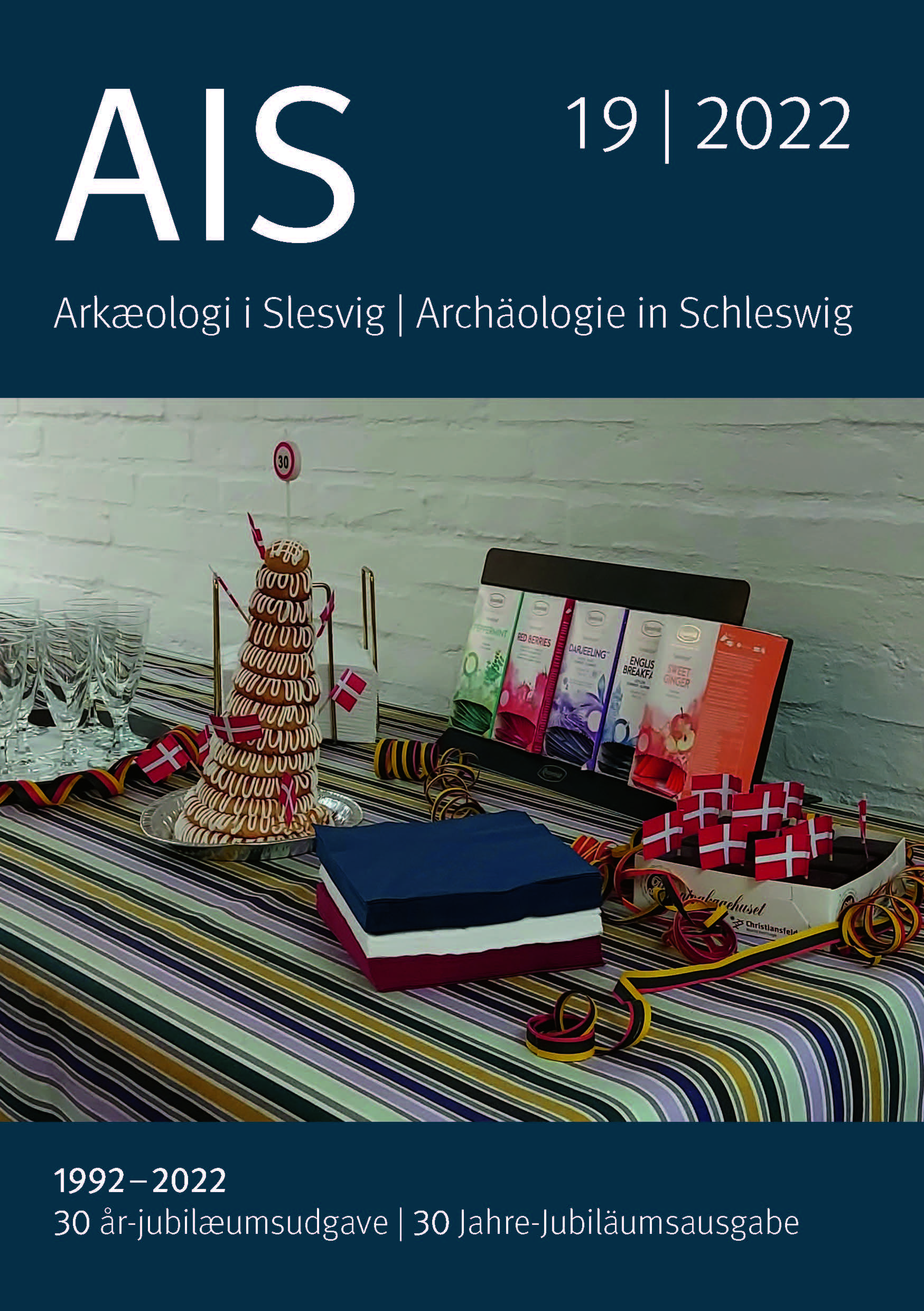Korn og arkitektur.
Overgangen mellem sten- og bronzealderen ved Revsinggård II
Abstract
During the spring and summer of 2020,
traces of a settlement dating to the
Neolithic
Period and Bronze Age were
archaeologically
excavated just north of
present-day Vejen in the central part of
Southern Jutland. The site was inhabited
at a time of major societal changes at the
end of the Neolithic Period. During the
excavation traces from several
houses
were found, dating primarily
between
the Late Neolithic and the Late Bronze
Age, with the majority of the houses
around 2000 BC. The site contained
both two- and three-aisled longhouses
as well as a so-called »hybrid house«,
which combines these two types of construction.
It is far from the first time
a hybrid house has been excavated in
Jutland, but only few have so far been
published. These houses can contribute
to new information regarding the
introduction of three-aisled houses in
Southern Scandinavia. Furthermore,
several pits containing large amounts of
charred grains were excavated. An archaeobotanical
analysis of these grains
has provided information about what
the inhabitants chose to cultivate and
consume, as well as information about
how crops etc. were stored. The results
showed that the main crop at Revsinggård
II was naked barley with a supplement
of emmer/spelt wheat. These analyses
have also given information about
the activities within the wider area surrounding
the houses and demonstrated
how important a good sampling strategy
is for further archeological research.
Downloads
Veröffentlicht
Zitationsvorschlag
Ausgabe
Rubrik
Lizenz
Copyright (c) 2023 Tidsskrift og forfatter

Dieses Werk steht unter der Lizenz Creative Commons Namensnennung - Nicht-kommerziell - Weitergabe unter gleichen Bedingungen 4.0 International.
Die Zeitschrift ist nicht dafür verantwortlich, Erlaubnisse von Dritten einzuholen, beispielsweise um Abbildungen bei evtl. Publikation des Materials.etc. zu benutzen.
Der Autor ist allein verantwortlich für alle Rechte bezüglich Kartenmaterial, Fotos, Zeichnungen und andere graphische Elemente.
Das copyright für die Artikel liegt bei den Autoren und der Zeitschrift.
Autoren, die Ihre werken in dieser Zeitschrift publizieren, akzeptieren folgende Bedingungen:
Open Access: Der Autor behält die Ursprungsrechte und erlaubt der Zeitschrift die Erstpublizierung.





